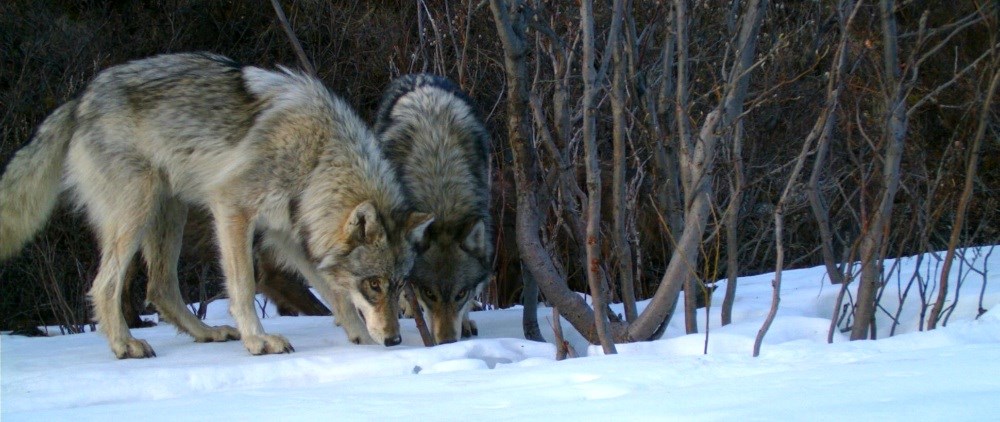Photo: National Park Service
Part V: It’s the Right Thing to Do
This is the least science-based of these posts on wolves as it rests mostly on an ethical foundation rather than a scientific one. In that sense it’s also much more personal. I believe strongly that the most important reason to restore wolves to Colorado, or any extirpated species anywhere, is because it’s the morally and ethically right thing to do.
Wildlife Values
We all have a set of values related to wildlife and the natural world. Stephen R. Kellert (see References) developed a categorization of those values. A person may hold beliefs from several of these categories at once, but usually has one dominant set of values.
These categories range from folks who have strong affection for wildlife and the natural world (Naturalistic) to those that hold strongly negative views (Negativistic, see table 1). One of the categories in between is what Kellert identified as Utilitarian, held by those who are primarily concerned with economic value and other direct contributions to human well-being. My primary attitude is Naturalistic, with a strong dose of Ecologistic.

A Change in Values
Aldo Leopold, the father of wildlife management went through an evolution of his attitudes towards the natural world in general and wolves in particular. Leopold’s attitudes changed from strongly Utilitarian to Naturalistic/Ecologistic over the course of his life as reflected in his writings. Those attitudes clearly became the driving forces in his views of wildlife and the natural world. This evolution is particularly evident in his attitude toward wolves and other large predators.
Early in his career, Leopold advocated for the total elimination of wolves as a means of increasing game (mostly deer) populations but by the 1940s his views had changed as described below. (For those unfamiliar with Leopold, you can read a short summary of his life and work here, and two biographers have described his life and work and the evolution of his attitudes (Flader 1994 , Meine 2010).
One of Leopold’s most famous essays that addresses wolves (Thinking Like a Mountain) is from the collection A Sand County Almanac. Leopold writes about a wolf he shot in New Mexico:
“…[w]e reached the old wolf in time to watch a fierce green fire dying in her eyes. I realized then and have known ever since that there was something new to me in those eyes, something known only to her and to the mountain. I was young then and full of trigger-itch; I thought that because fewer wolves meant more deer, that no wolves would mean hunters’ paradise. But after seeing the green fire die, I sensed that neither the wolf nor the mountain agreed with such a view.”
In another essay from the same collection (The Land Ethic) Leopold writes “[t]he last word in ignorance is the man who says of an animal or plant, “What good is it?” If the land mechanism as a whole is good, then every part is good, whether we understand it or not. If the biota, in the course of eons, has built something we like but do not understand, then who but a fool would discard seemingly useless parts? To keep every cog and wheel is the first precaution of intelligent tinkering.”
This directional change in Leopold’s attitude towards wolves is echoed in attitudinal changes in the general public. George et al (2016) studied attitudes towards a range of animals,including wolves, and compared 2014 attitudes to those found by Kellert over thirty years earlier (Kellert and Berry 1980). In 1978, 39% of those surveyed viewed wolves negatively, while in 2014, 17% did so. That shift of 22% was reflected in changes in positive views towards wolves from 43% in 1978 to 61% in 2014. Most people just like wolves.
Restoring Wolves to Colorado
So, what does all this have to do with wolves and their restoration to Colorado? Some of us view restoration as an ethical or moral obligation, because every species has an inherent right to live, and extirpating species is an ethical error. Others take a religious stance resting on the notion of protecting creation. These views end in the belief that protecting and restoring species is the “right” thing to do; that is, it’s a value judgment.
Our knowledge of the ecological role of large predators has grown since Leopold’s time, and that information highlights the importance of wolves to the ecosystems where they evolved.
Both for the inherent value and right to existence of wolves themselves, and for the value of intact ecosystems, restoring wolves to Colorado is the right thing to do.
References:
Flader, S.L. 1974. Thinking Like a Mountain: Aldo Leopold and the Evolution of an Ecological Attitude Toward Deer, Wolves, and Forests. Columbia: University of Missouri Press. 320 pp.
George, K.A., K.M. Slagle, R.S. Wilson, S.J. Moeller, and J.J. Bruskotter. 2016. Changes in attitudes toward animals in the United States from 1978 to 2014. Biol. Conserv. 201(2016):237-242.
Kellert, S.R. 1984. American attitudes toward and knowledge of animals: An update. In M.W. Fox & L.D. Mickley (Eds.), Advances in animal welfare science 1984/85 (pp. 177-213). Washington, DC: The Humane Society of the United States.
Meine, C.D. Aldo Leopold: His Life and Work. 2010. Univ of Wisconsin Press. 672 pp.




